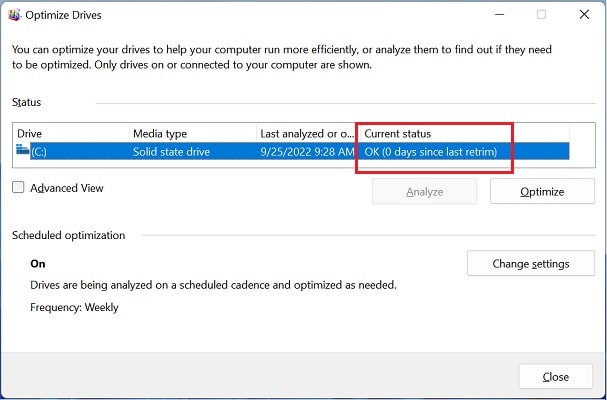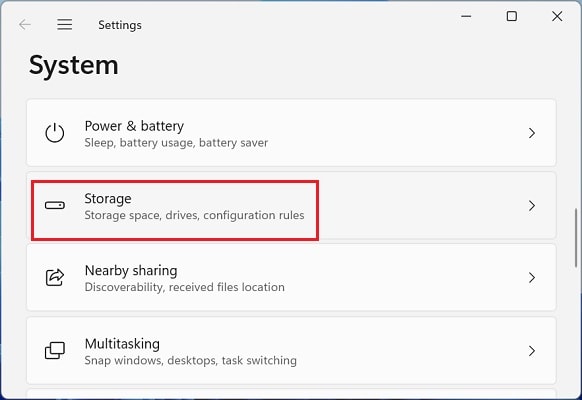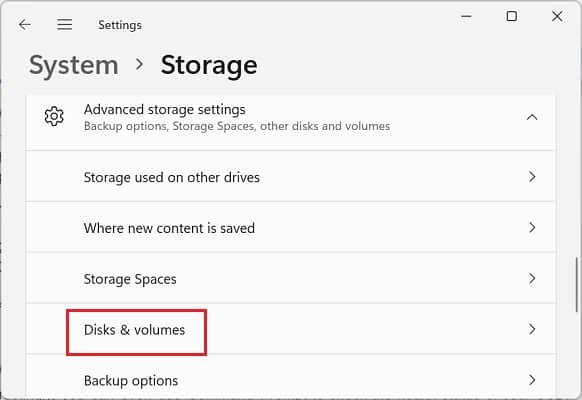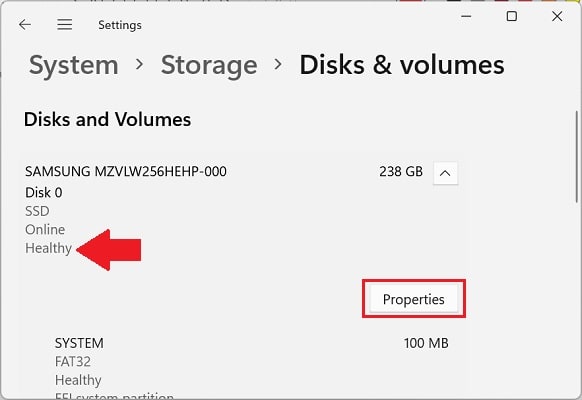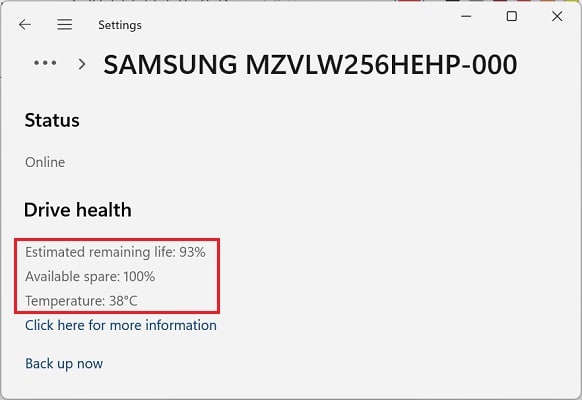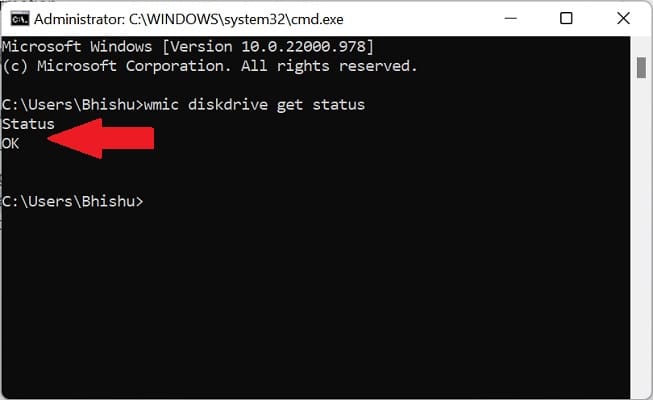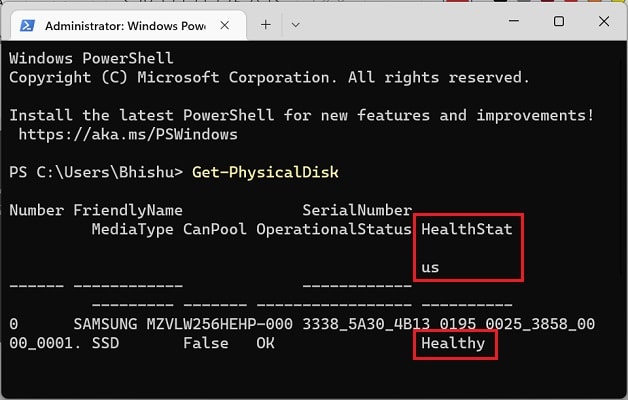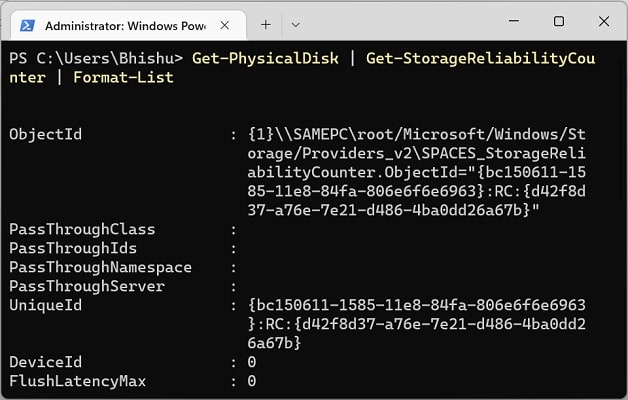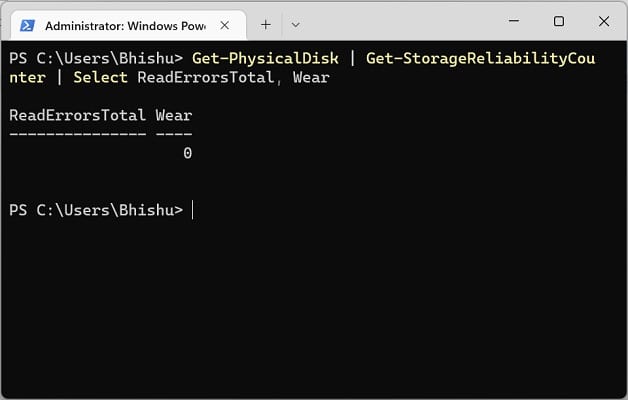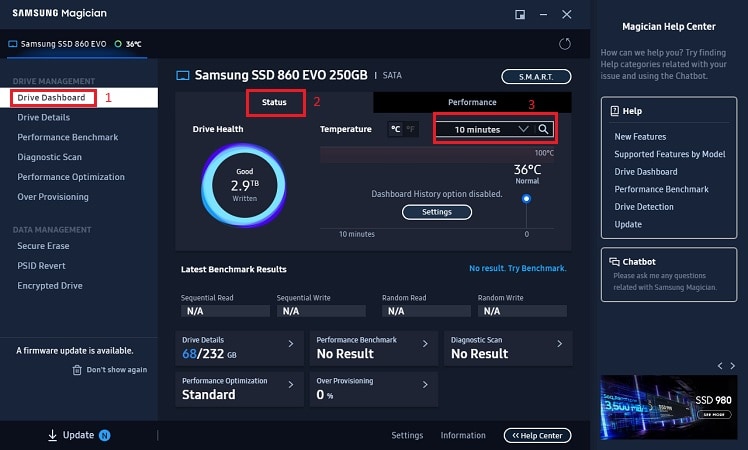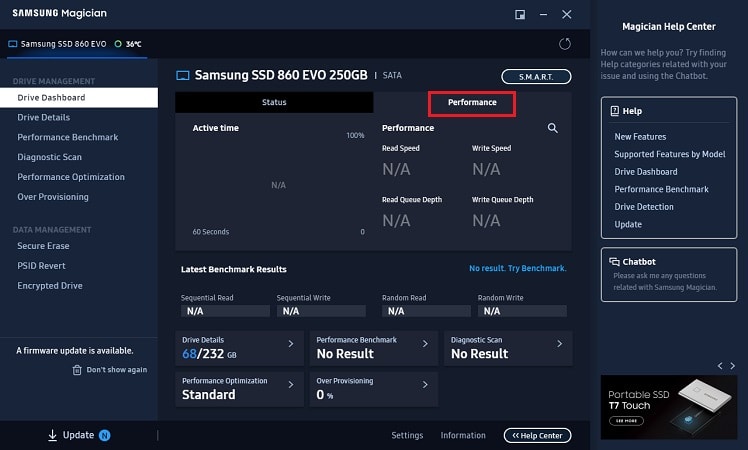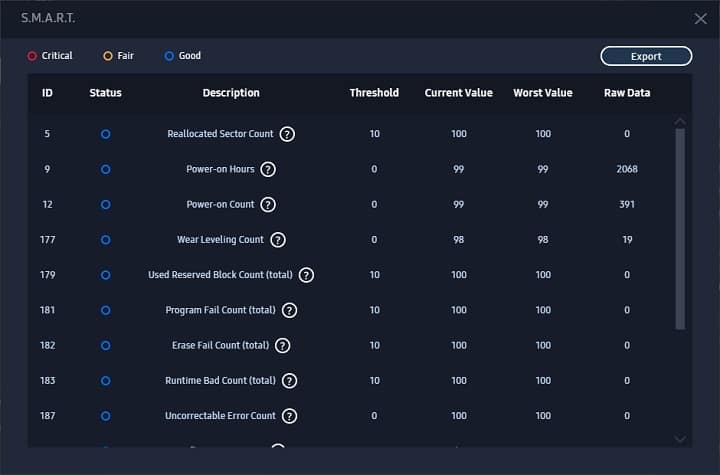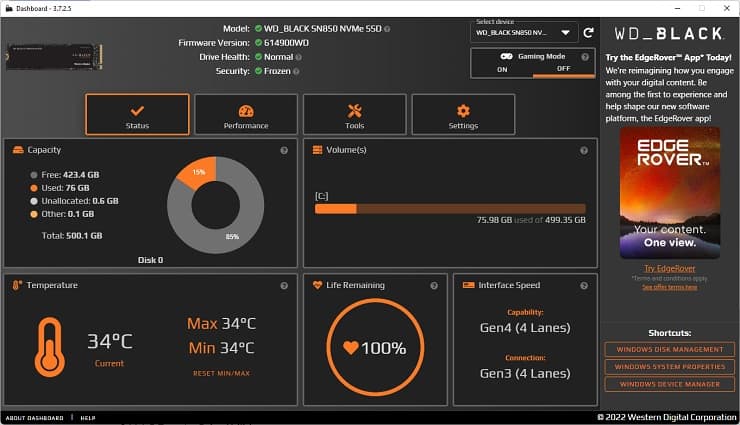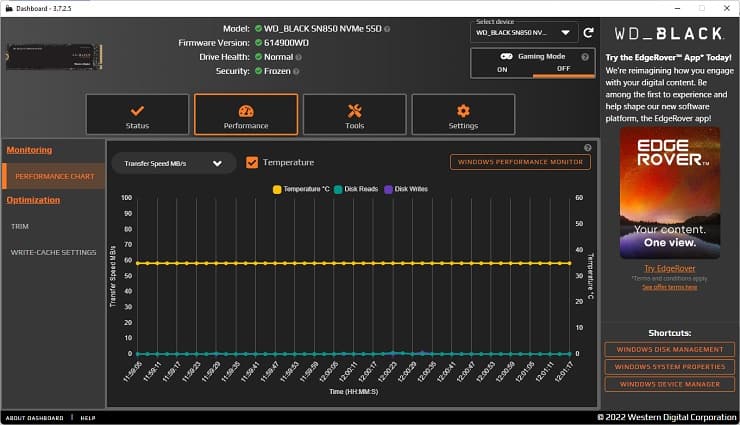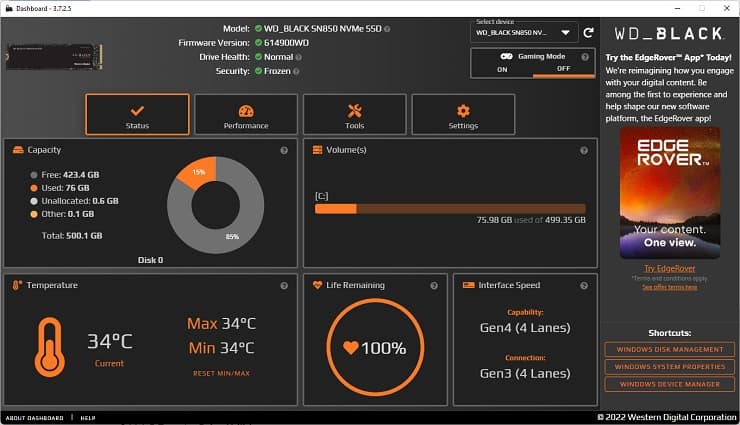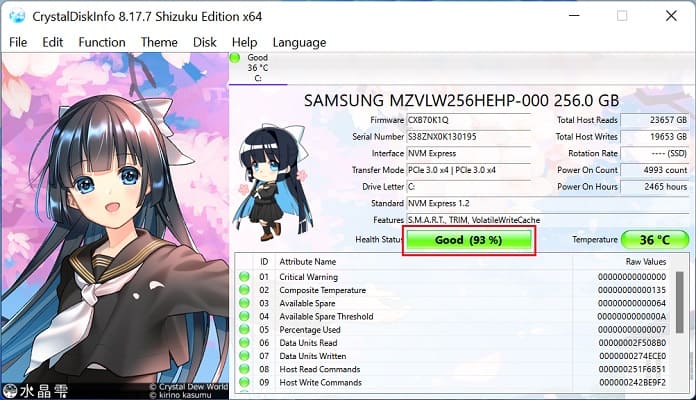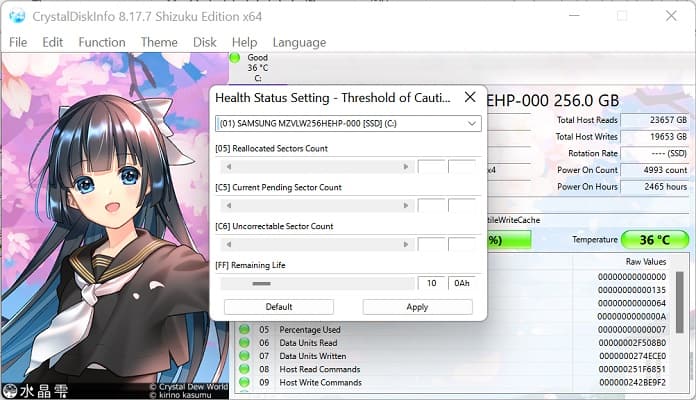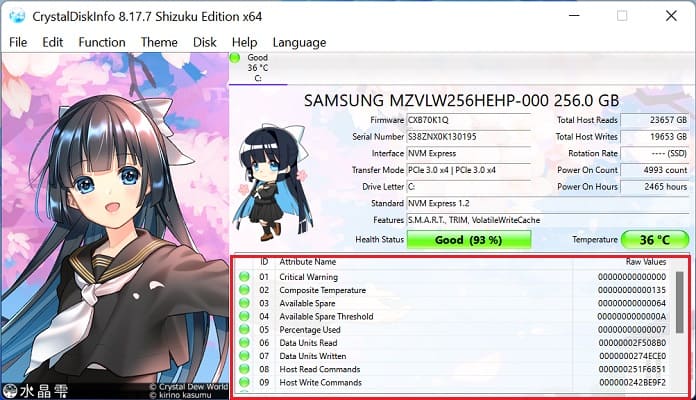Well, an SSD health check simply means determining the solid state drive’s status, transfer speed, optimization, and performance. Thus, this gives you an idea of its working condition and how long it will last.Regarding the same, this article focuses on everything you should know about SSD’s health and lifespan. Also, we will assist you in checking the present health condition of your solid state drive using six effective ways.
What is the Lifespan of SSD?
Like any other storage device, SSDs are susceptible to physical damage and even deteriorate over time. Basically, the lifespan of these storage devices is determined by various metrics – age, Tera Bites Written (TBW), and Drive Writes Per Day (DWPD).Before getting a new SSD, we recommend checking its lifespan. Generally, manufacturers indicate the endurance (TBW) that lets you determine the total number of terabytes that can be written over time.For example, if your SSD has a lifespan of 500 TBW with a total storage of 2 TB, you can write 2 TB of data 500 times overall. Once this criterion is fulfilled, the storage device stops working.Generally, SSDs last as long as ten years, but this is heavily affected by usage. Thus, it’s pretty crucial that you check its health once in a while to learn how your solid state drive is performing.
When Should I Check SSD Health?
Checking health helps you discover the SSD’s temperature, life remaining, interface speed, and even monitor performance. Additionally, most manufacturers have adopted a feature called S.M.A.R.T., an abbreviation for Self-Monitoring, Analysis, and Reporting Technology. Basically, this attribute lets us monitor SSD status, power-on count, power-on hours, airflow temperature, and many more.
How Can I Check SSD Health?
Interestingly, checking SSD health status is easily possible without downloading any application. However, if you want to explore more, we recommend using the manufacturer’s management tool or some free tools.In this section, we will guide you through all the possible ways of checking SSD health.
Check Status in Defragment & Optimize Drive Utility
Windows has a built-in Defragment & Optimize Drive utility that lets you rearrange the unordered files on HDDs. However, we do not recommend defragging your SSD as it might wear or tear.Nevertheless, the same application lets you determine the current status of the solid state drive. So, without further delay, let’s jump right into the necessary steps to do so:
In Windows Settings
Another easy way to check your SSD’s health is via Windows Settings. However, using this method, you’ll only be able to track the estimated remaining life, available spare, and temperature. Here are the following steps you need to follow to do just that:
In Windows Command Prompt
Interestingly, you can even use Command Prompt to check the health status of your SSD. Below are the required instructions you need to follow:
In Windows Powershell
As in Command Prompt, Windows Powershell is useful for checking the health status of your SSD. Apart from that, you can also check usage statistics and warning signs. Below are all the necessary commands that help you track such information:
Using Dedicated Manufacturer SSD Management Tools
Well, every SSD manufacturer has provided a dedicated SSD tool for their users. Basically, these utilities let you explore a lot more than the health status, like the interface speed, precise temperature, life remaining, and many more.In this section, we have included the utilities of the most popular SSD manufacturer tools. So, if you do not find yours, you can find the correct application and follow a similar procedure.
On Samsung
Undoubtedly, Samsung is a trusted brand that produces one of the best SSDs. If you use one of its models, you can use Samsung Magician Software to check SSD health.So, here’s how you can run an integrative health check, authenticate SSD, and perform a S.M.A.R.T. check:
On Intel
Like Samsung, Intel is another popular SSD manufacturer. To check the SSD health, Intel users can use the Memory and Storage Tool available for free:
On Western Digital
Western Digital has also adopted the Dashboard application for checking SSD health. Follow the below steps to get the necessary information:
On Kingston
Unlike other manufacturers’ SSD applications, Kingston provides much more detailed health information for its users. You can go through the following guideline to learn about your SSD’s health using Kingston SSD Manager:
Using Third Party SSD Management Tools
If you have multiple SSDs in a single system and want to check the overall health of all your storage devices, the best option is to download a third-party SSD management software. Well, there are plenty of such programs, like Crystal Disk Info, Crystal Disk Mark, SSD Life, etc.In this section, we have used Crystal Disk Info for demonstration purposes. Nonetheless, you can use any other free, open-source program to monitor SSD health. So, without further ado, let’s go through the guide on how to use Crystal Disk Info for checking SSD health:

